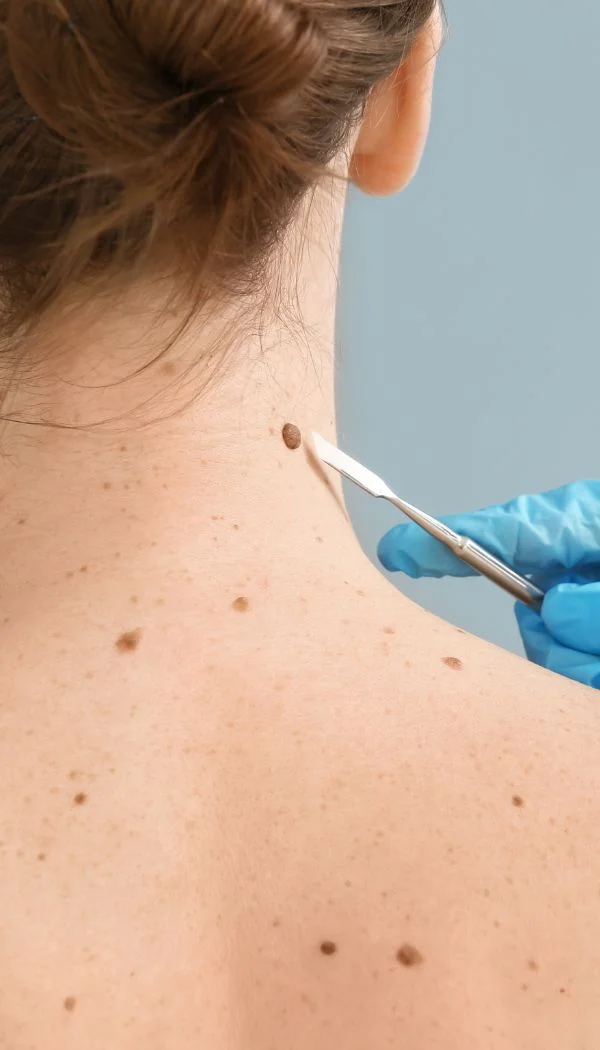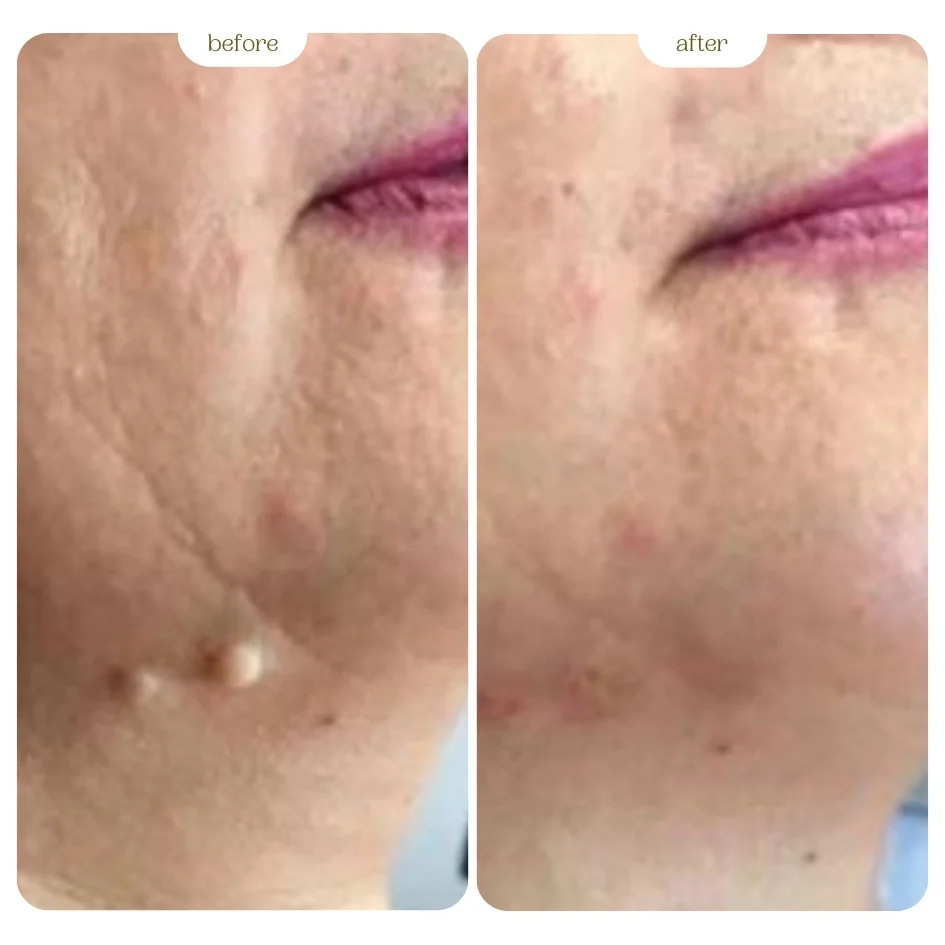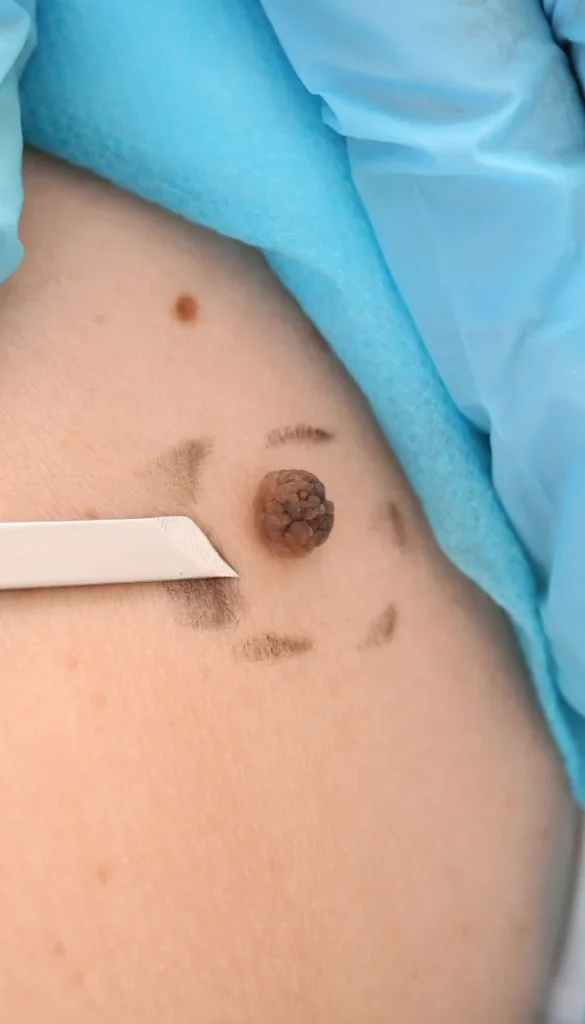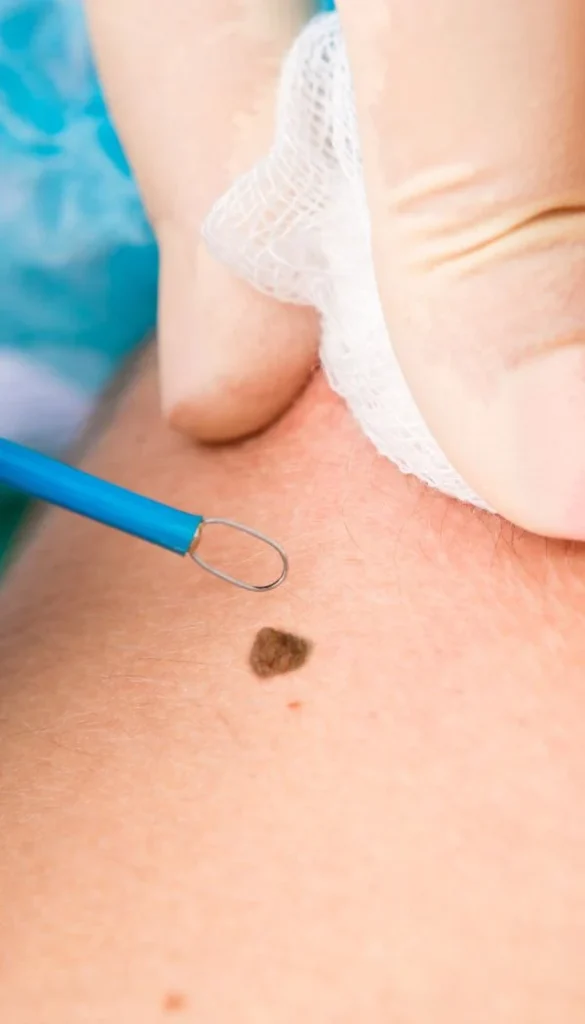From subtle glow-ups to targeted solutions, we deliver results that make a difference.






Moles are small, coloured patches that appear on the skin as a result of clusters of melanocytes, the cells that give our skin its colour. Moles exist in a variety of colours, ranging from light brown to deep black, and are commonly found on the face, arms, and back. Although the majority of moles are harmless, they can occasionally cause cosmetic problems or demand removal if their shape, size, or colour changes.
Moles are often caused by a combination of genetics and sun exposure. Exposure to sunshine can increase melanin production, potentially darkening or enlarging existing moles. Moles can be present from birth, but they also appear as we mature. Atypical moles might indicate skin changes that require medical attention, thus it is critical to monitor them consistently.
Dr. Ahmad Clinics offers safe and effective mole removal services that can give you smoother, more even-toned skin. Understanding the causes of moles and spotting any changes allows you to maintain your skin healthy and make informed decisions about their removal.


At Dr. Ahmad Clinics, mole removal is a rapid and minimally invasive process that is designed to be comfortable. Before beginning, our professional will analyse the mole’s size, shape, and position to identify the best removal method. We use modern treatments like as excision, laser treatment, and shaving to achieve the safest and finest cosmetic results.
To guarantee a painless procedure, a local anaesthetic is used to numb the area. Once the skin is prepped, the chosen procedure is executed with precision, ensuring total removal while minimising scarring. The entire procedure normally takes only a few minutes, and most patients can resume their normal activities immediately.
At Dr. Ahmad Clinics, we endeavour to provide effective results while minimising discomfort. Whether the mole is on the face, arms, or back, we personalise our method to provide smooth, natural skin. With skilled care, you can rely on safe, efficient mole removal that meets your cosmetic goals.
After mole removal at Dr. Ahmad Clinics, you may expect a smooth recovery and natural-looking results. The treated area may appear somewhat pink or painful right after the operation, but this usually diminishes within one to two weeks as the skin recovers. To achieve the greatest possible results, our doctors will give you basic aftercare recommendations.
To promote rapid healing, keep the area clean and minimise unwanted touch. To avoid scarring, avoid picking at the region and, if necessary, apply a light antiseptic. Over-the-counter pain relievers can alleviate mild discomfort, although this is uncommon.
Because of our excellent procedures, patients frequently have little downtime and can continue their usual activities soon after the surgery. Whether you’re having a mole removed for aesthetic or medical reasons, our team is committed to producing clear, even-toned skin. Trust Dr. Ahmad Clinics for expert mole removal and a smooth healing procedure that will leave you feeling confident.

| Treatments | Price |
|---|---|
| Laser Mole Removal | From £299 |
| Mole Excision | From £499 |
At Dr. Ahmad Clinics, we offer excellent mole removal techniques that will leave you with clean, clear skin. Our staff offers safe, effective treatments to provide a natural appearance and long-lasting results. Are you ready to take the next step? Book your consultation today and find out how easy and comfortable mole removal can be. Schedule your appointment today and begin your journey to confident, blemish-free skin!
Home mole removal isn’t recommended due to risks of infection and scarring. Professional removal is safer and more effective.
Signs include asymmetry, irregular borders, multiple colors, a large diameter, and any changes over time. Consult a dermatologist if you notice these.
Moles can be hereditary and may also develop due to sun exposure, which can darken or enlarge existing moles.
Yes, some moles may grow or darken with age or sun exposure. Any significant changes should be evaluated by a professional.
The finest dermatological and aesthetic treatments tailored to your specific skin needs are our speciality at Dr Ahmad Clinics. Our clinic provides state-of-the-art procedures to help you attain the healthy, radiant skin you deserve, from sophisticated cosmetic solutions to professional skin care.
We Also Accept:
Interest Free Payment Options.

Dr Ahmad Clinics ©. All Rights Reserved